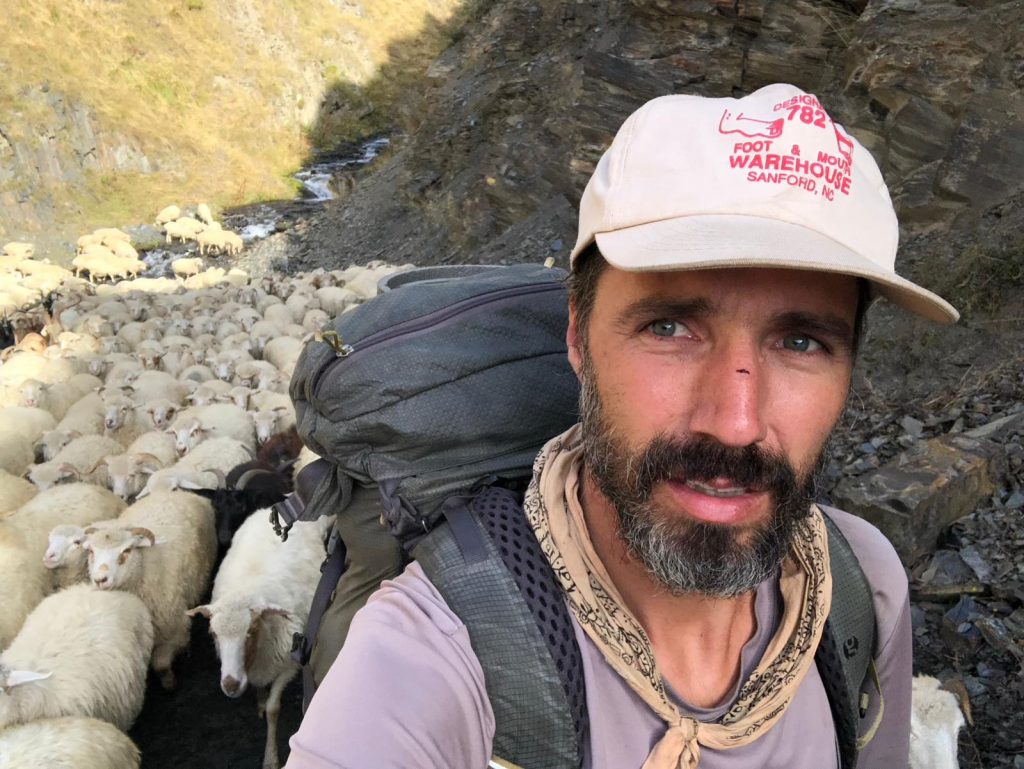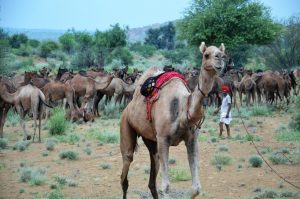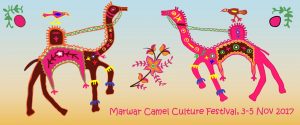 |
A visit by a delegation of Raika pastoralists to Switzerland in September 2007 features prominently in a report by an LPPS partner. The report, “Advocating livestock keepers’ rights” details the work of the League for Pastoral Peoples and Endogenous Livestock Development for the International Technical Conference on Animal Genetic Resources at Interlaken, Switzerland in September 2007. Download report |
 |
Sanjeev Bhaskar, host of the BBC television programme The Kumars at No. 42, featured Rajasthan on his BBC2 travel documentary series “India with Sanjeev Bhaskar“. During his visit to the state, Mr Bhaskar met the Maharajah of Jodhpur, along with LPPS director Hanwant Singh and Ilse Koehler-Rollefson of LPPS partner the League for Pastoral Peoples and Endogenous Livestock Development. Part 4 of the film series is entitled “A camel called Sanjeev“. The camel was born during Mr Bhaskar’s visit to the herd of Adoji Raika, a respected Rajasthani camel pastoralist, and was named in Mr Bhaskar’s honour. The picture on the left shows Kotar, Ilse’s camel, greeting Mr Bhaskar. Click on the picture for a closer view (photo courtesy of the BBC). Hanwant, Ilse, Kotar and camel milk (a product promoted by LPPS) all feature prominently in the documentary. The programme has been broadcast in Britain and several times in India. |
 |
Keepers of Genes, a 28-minute documentary produced by award-winning filmmaker Moving Images, documents the role played by pastoralists in preserving animal biodiversity and the key issues confronting them today. The film features LPPS’s work with Raika pastoralists in Rajasthan. It accompanies a 2007 book, Keepers of genes: The interdependence between pastoralists, breeds, access to the commons, and livelihoods, by Ilse Koehler-Rollefson and the LIFE Network. Order copies of the film and book from the League for Pastoral Peoples and Endogenous Livestock Development, or the film from Moving Images |
 |
“Standing in the middle of a camel herd is pure magic… You can walk right up to a camel of your choice, and it will probably stretch out its neck to say hello. If you are brave enough to hold still, it is likely to give your face an inquisitive nuzzle, sniff your hair, and may be give you a little facial massage like it would a fellow camel…” On 2 December 2007, The Hindu newspaper’s Sunday magazine carried a 1100-word article by Ilse Koehler-Rollefson on the Raika and their camels – and the problems they face in finding enough grazing for their animals. “Since the time of the Maharajahs, the Raika have had the right to graze in the Aravalli Hills,” says the article. “In the 1970s, a significant part of this grazing area was gazetted as the Kumbalgarh Wildlife Sanctuary. Certain areas (‘enclosures’) were officially prohibited from grazing for seven years. But the enclosures were not opened after the prescribed period and the Raikas were allowed access only against payment of bribes.” The Raika and LPPS have taken this issue to the Rajasthan government and Supreme Court, but the case still has not been resolved. “The camel is an icon of Rajasthan, and the government makes liberal use of the associated culture to lure tourists,” says the article, “but it pays no attention to this issue.” Read the complete article here. |
 |
A major Indian daily has reported on the Raika delegation’s lobbying visit to Europe in favour of livestock keepers’ rights. “A delegation of ‘Raikas’ (camel breeders) from Rajasthan who visited Europe recently to meet fellow pastoralists and share traditional wisdom on livestock keeping, have returned after successfully convincing the decision-makers at global forums of the need to preserve livestock bio-diversity and indigenous production systems”, reported The Hindu on 17 November 2007. “Attending a series of high-level meetings in Europe, they advocated the rights of herding communities and sought recognition for their role in bio-diversity conservation,” said The Hindu. Full report in The Hindu. |





